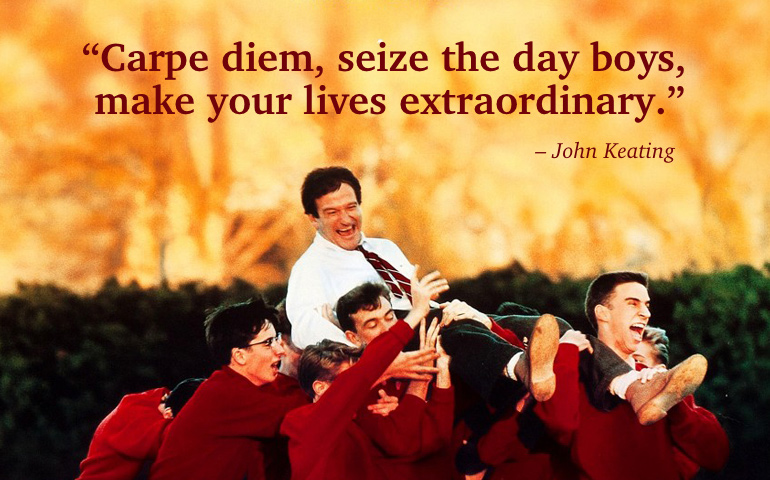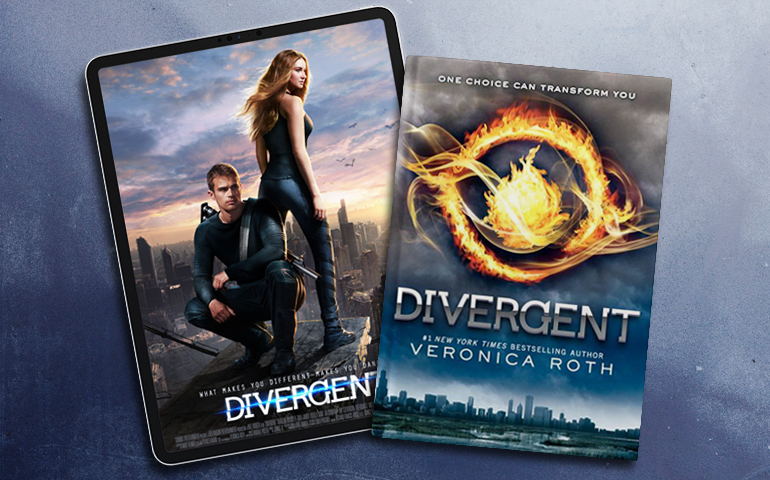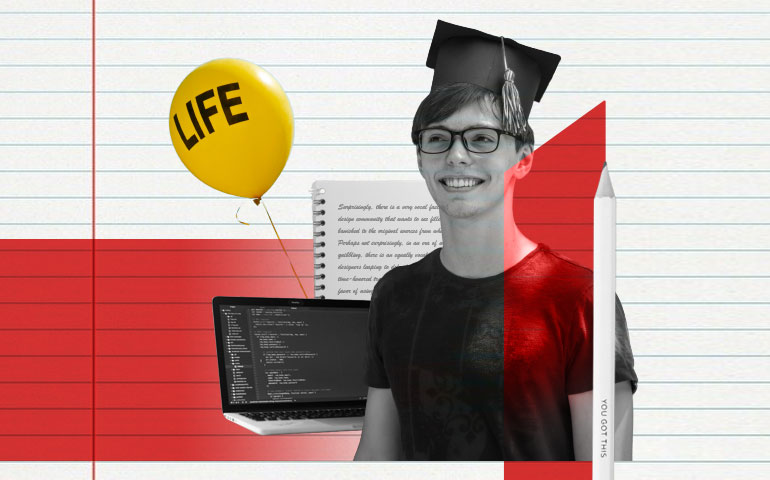
Dead Poets Society: Changing the Way We View Poetry
The announcement of the poetry unit in my class is always met with the characteristic moans and sighs. Much like Shakespeare, no one turns their head or raises an eyebrow if your hand shoots up when the concept of disliking poetry is entertained. Disliking poetry seemed to be a rite of passage for most students taking a mandatory English course. It is for these reasons that I was so surprised when, only a week after the spoken word poetry unit was announced, chants of carpe diem and barbaric yawps resonated in every hallway and classroom.
The English teachers had conjunctively decided to ease the class into poetry by showing us the coming-of-age drama Dead Poets Society. At the outset, it seemed like the film and the students were diametrically opposed: a 1959 all-boys conservative boarding school versus a 21st-century group of us watching them. However, things slowly began to shift when we became familiar with the withdrawn Todd, the dreamer Neil, a heart-on-sleeve romantic Knox, the rebel Charlie, their maverick English teacher Mr. Keating, and the fogey group of adults that surrounded them. Each character, although slotted in their respective archetypes, were all bound by the societal pressures that stifled their own lives and led to a great deal of tragedy.
In the week following the film, a certain Dead Poets fever had gripped every topic of conversation and infected every classroom and static hallway. Our English class turned into a lively discussion and debate of the motivations of certain characters, who was to blame for certain events, and what the outcomes would be had different decisions been made.
When hearing that we had watched this movie, every teacher, no matter the subject, would reminisce and share their anecdotes about the whereabouts and age at which they had seen the film. In some classes, we even played Dead Poets Society themed hangman and the wall where we were invited to share our favourite memories of the year was spangled with “Carpe Diem,” and “O’ Captain! My Captain!” In a classroom, I remember scrawling the word “Yawp” on the chalkboard only to return the next day to find that someone had added a few extra “w’s” in-between and a very large “barbaric” above it.
This fervent buzz around poetry did not die down when our spoken word poetry unit came. On the contrary, for the first time, I saw students genuinely enthusiastic about choosing topics for their poems and about the possibilities that were available. The idea of spoken word appealed to even the staunchest poetry critics as it combined the exciting and cathartic performance-based aspect with the promise of Robin William’s Keating-like liberty. Even though it is impossible to make everyone eager about poetry, it was the initial discussion that seemed to be missing in previous years. In the past, we would simply review a PowerPoint about figurative language, read or analyze a myriad of Frost or Angelou poetry, and finally write a poem for ourselves employing the aspects we learned. For many who already struggled to achieve a balance of similes and metaphors in their creative writing, the concept of employing them in the rigid structure of a sonnet or even blank verse was tedious. In essence, the very features that poetry brings to the forefront when it comes to evoking a mood or a feeling in the reader disappeared.
However, this year’s new spoken poetry unit coupled with the showing of Dead Poet’s Society truly shed a new light when it came to my school’s instruction of poetry or lack thereof. We spent far less time reviewing and memorizing key terms—such as alliteration and onomatopoeia–and far more on discussing what makes a poem effective.
By stripping away our preconceived notions on poetry and revealing the all-too obvious but often overlooked reasons of why we write poetry, we were able to discover that there was a place for rhyme and rhythm of all sorts in the classroom. Even though it can be said that Mr. Keating’s ideas about society and poetry are no more than pipedreams and can in fact pose harmful consequences, the simple discussion that it prompted was enough to reignite excitement about the place of poetry in the modern world.
Of course, it is quixotic to say that a simple film or a more lenient unit in class will be the deciding factor to swing one’s opinion about poetry. It is similarly unreasonable to say that poetry should be without form and that freedom lies in one’s ability to shun the curriculum; the truth is that both aspects are mutually exclusive and it is necessary to achieve a balance by striving for constant improvement of the curriculum but, as well, honouring some aspects that make it successful. In poetry, this is especially true as there is certainly a place for stern iambs and rigid structure. However, it is important to acknowledge that there is no one-size-fits-all approach. This is what made the film Dead Poet’s Society such a good preface to our spoken word poetry unit; it was in harmony with the leniency and depth of feeling presented in spoken word poetry but it also prompted a vital conversation on the place of rules in our society and how they can rein in chaos. While I cannot be sure that the now-familiar “Yawps” and fervent discussions of poetry will ever ring again in my classroom, I know that the world is better for having had students ready and willing to “seize the day” and “make their lives extraordinary.”



